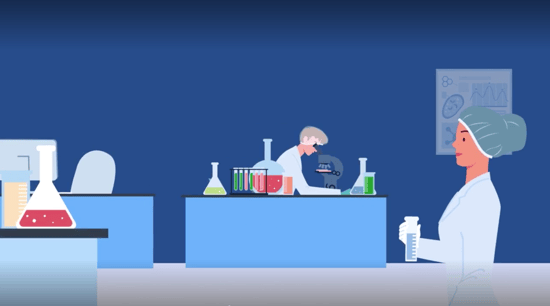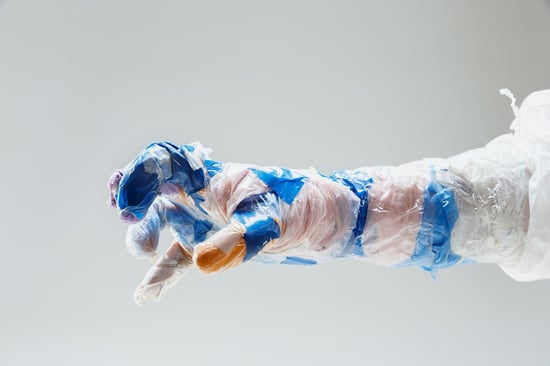Your cleanroom gloves help to keep your controlled environment free of contaminants. Right?
How do you know for sure that your cleanroom gloves are not inadvertently introducing contaminants – and risking your production yields and other unintended consequences?
Cleanroom operators use gloves all day, every day, and are one of the few items in every cleanroom that come into consistent, direct contact with products. Compared to other cleanroom equipment, tools, and supplies, the cost of gloves is a fraction of operational budgets, but the cost of product contamination and lost yields can be enormous if the ubiquitous cleanroom glove is not as “clean” as you might think.
[Part 1 in our Risk Reduction: Glove Contamination Series]
Table of Contents
- PPE and Cleanroom Gloves are Different
- Focus on Nitrile Cleanroom Gloves
- The Bad Guys: Fillers, Accelerators, and Pigments
PPE and Cleanroom Gloves are Different
It sounds simple, but avoiding contaminants starts with the intended use of the glove. The vast majority of disposable gloves manufactured globally are made for PPE applications where the gloves protect the glove wearer from bacteria, microbes, pathogens, and other harmful substances for short periods of wear. PPE gloves must be free of pinholes and leaks that break that protective barrier, but they are not cleanroom compliant.
Cleanroom gloves protect the products you manufacture from particles, extractables, non-volatile residue, and ionic contaminants for long periods of wear. Cleanroom gloves must be free of contaminants and meet cleanliness requirements.
Focus on Nitrile Cleanroom Gloves
We’ll focus on nitrile gloves since these are preferred over latex or PVC gloves for a wide range of controlled environment applications. Nitrile offers overall superior performance across the three key factors of comfort, cleanliness, and cost.
The Bad Guys: Fillers, Accelerators, and Pigments
There are three categories of additives to glove formulations that are sources of contaminants and allergens:
- Fillers: Nitrile gloves are made of nitrile butadiene rubber (NBR), a petrochemical derivative. When costs of petrochemical materials like NBR increase, manufacturers add less expensive fillers to their glove formulations to reduce their raw material costs. The most common nitrile glove filler is low-cost clay. Clay and other fillers interfere with the molecular structure of NBR, weakening its chemical bonds. Without these bonds being intact, nitrile gloves lose their ESD properties, elasticity, and chemical compatibility.
- Accelerators: Chemical accelerators are used to speed up the production of gloves. Running production lines faster can increase production and drive down costs. The problem is that chemical accelerators can outgas. This chemical outgassing is a contaminant source – and a potential allergen to cleanroom operators – reducing their comfort and productivity.
- Pigments: Pigments are added to mask glove defects and hide fillers that discolor the normally pale, translucent pure nitrile material. One pigment, made up of titanium dioxide, was recently identified as a contaminant. TiO2 is routinely added to formulas to enhance the white color of cleanroom gloves. New detection methods revealed that this hard particle is a contaminant introduced to the controlled environment by gloves specifically. Be very cautious about procuring colored nitrile gloves for cleanroom use.
Learn More: The First Additive Free Cleanroom Nitrile Gloves
In some instances, manufacturers might be cutting costs that impact glove performance and/or introduce contaminants. In other cases, they may not be testing their gloves using uniform testing standards and modern technologies to accurately detect sources of contamination in glove materials. You can ask your glove manufacturer about their use of fillers, accelerators, and pigments to protect your controlled environment and your production yields.
All Valutek nitrile gloves are produced with 100% clean, synthetic nitrile polymer (Acrylonitrile Butadiene) without fillers and accelerators. Our cleanest nitrile glove line is also pigment free.
If you're interested in learning more about cleanrooms, we recommend watching these two related videos. Check out 'How Can I Select the Most Appropriate Glove for My Cleanroom?' below:
And here's 'Cleanliness for Glove Cleanliness and Compliance':
These videos provide valuable insights into cleanroom best practices and common pitfalls to avoid.
Cover Image by prostooleh on Freepik

Valutek
Valutek is one of the first and few manufacturers to offer a full product portfolio of best-in-class cleanroom products. Since 1988, our controlled environment consumables are helping leading organizations operate their cleanrooms in a consistently stable state.
Related Articles
- Valutek

- 21 February 2023
Cleanroom Glove Selection Fundamentals Part II: Cleanliness Requirements
Often customers ask us for a “Class 10 cleanroom glove.” The truth. It doesn’t exist.
Class 10 is...
- Valutek

- 1 May 2024
Modern Methods for Detecting Contaminants in Cleanrooms: An Overview
As cleanroom technology advances, so do the methodologies and technologies for testing contaminants.
- Valutek

- 21 February 2023
Cleanroom Glove Selection Fundamentals Part III : Comfort Requirements
Operators are the #1 contaminant source in controlled environments. Cleanroom gloves must be donned...


